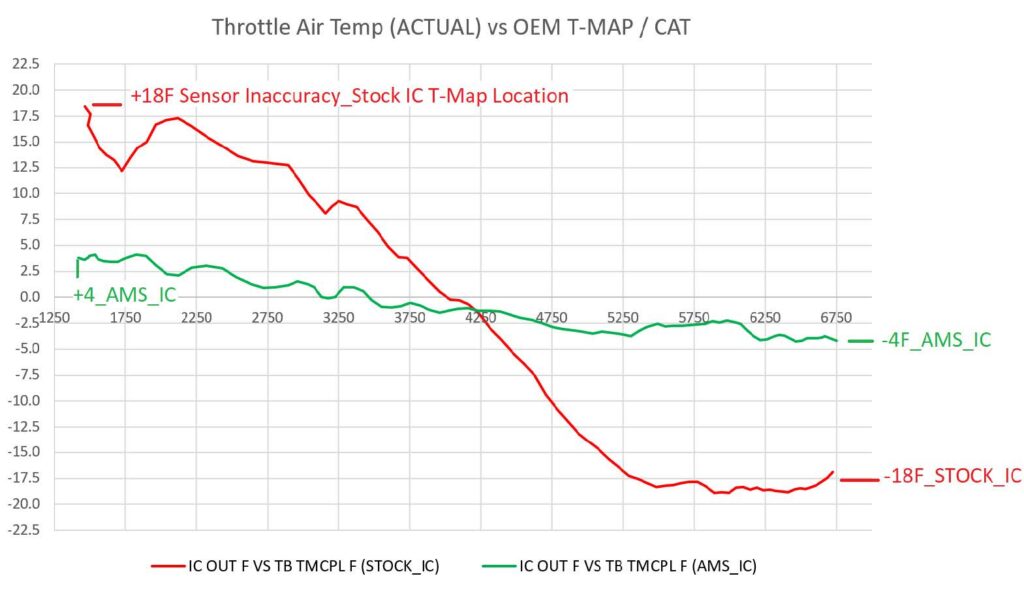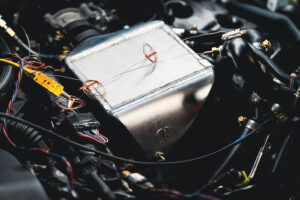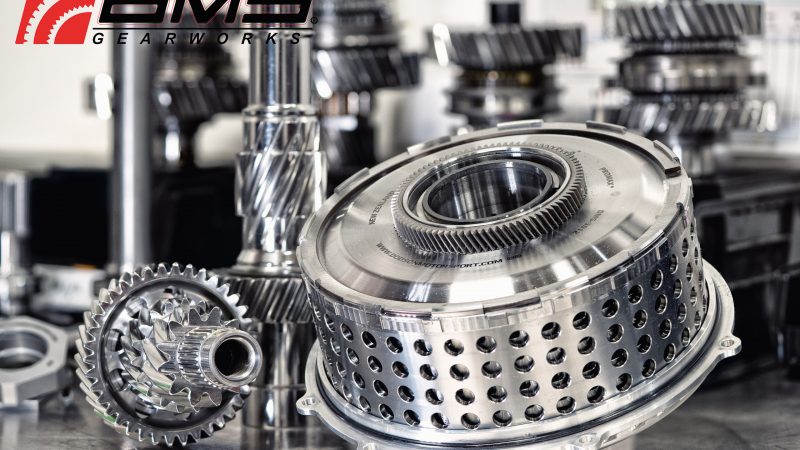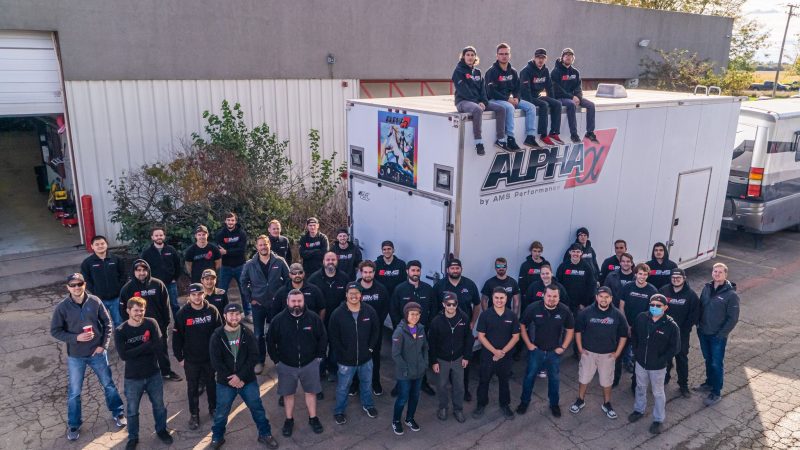VR30 Charge Air Temp (CAT) Data Errors
One of the many important sensors on the VR30DDTT engine is the Charge Air Temperature sensor. This is a dual-purpose sensor, which doubles as the Bank 1 Boost Pressure Sensor. This type of sensor called a Temperature Manifold Absolute Pressure sensor or “TMAP” for short. The temperature and pressure data readings from this sensor are used in many important calculation strategies, including boost control, air-density calculations, and temperature related safety/compensation trims
A notable design flaw on the OEM Intercooler is that it places this TMAP in an isolated pocket off of the side of the intercooler end tank, withdrawing the TMAP from the airstream. Our AMS SNAILWORKS© Engineering Team found that (while this location doesn’t affect the pressure reading by a considerable amount) that it does lead to considerably delayed temperature readings on the OEM intercooler.
This delayed reading due to sensor location is suboptimal meaning that important/related calibrated strategies within the ECU/Tune will have delayed effect. For example, when sensor is reading lower than actual temperature due to the delay this could cause safety related Air Charge Temp trims to ultimately not react fast enough and potentially cause harm to your engine. Likewise, sensors readings higher than actual due to delay, could cause safety related Air Charge Temp trims to be in effect when they are un-warranted, resulting in less-than-optimal power.
Our AMS SNAILWORKS© Engineering Team has designed and combated this issue with an improved/optimized TMAP sensor location on the AMS Performance INFINITI Q50/Q60 VR30 Intercoolers to allow for the most responsive and accurate temperature data possible. With the peace of mind that the TMAP sensor readings are responsive and accurate, your tuner can now more accurately calibrate any Charge Air Temp related safety trims/corrections to fully optimize power and increase safety in any condition.
The above graph illustrates the amount of sensor inaccuracy induced by sensor location:
- Positive air temperature at the beginning of the run means the sensor is reading higher than actual air temp.
- This typically perceived as “heat-soak” when reviewing logged data via the OEM T-Map sensor.
- Negative sensor inaccuracy at the end of the run means the sensor is reading lower than actual air temp.
Sensor position outside of the airstream with the stock and competitor’s intercoolers is the leading cause of temperature inaccuracy vs the actual temperature of the air entering the inlet manifold.
- For this reason, the AMS Intercooler Upgrade was specifically designed to place the OEM T-Map sensor within the airstream for the sensor to provide the most responsive, accurate, and consistent readings. 4F max deviation vs up to 18F deviation.
- With accurate air temp readings, this allows the tuner to more precisely calibrate air temp related safety trims/corrections to optimize power and safety in any condition.
Another important note to keep in mind is that because the TMAP sensor location varies between the OEM intercooler, other aftermarket intercoolers, and the AMS unit, making a direct comparison is impossible when utilizing the TMAP sensor to view Charge Air Temp (CAT) data. The only direct comparison method is via a thermocouple sensor placed in the airstream near the throttle bodies to determine accurate temperature numbers.








